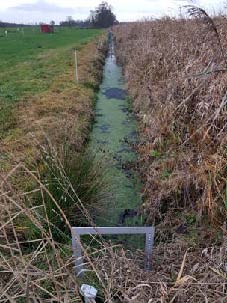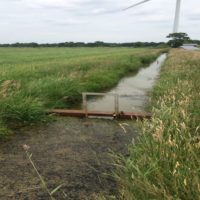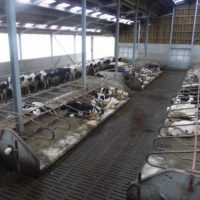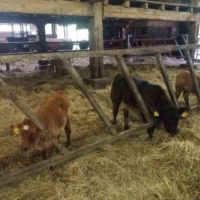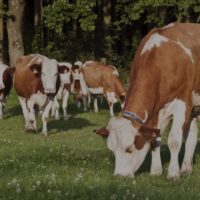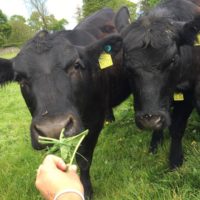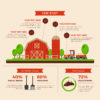Description
Background
The innovation was implemented in context of the project SWAMPS, which aims at developing and evaluating practicable options for actions on how to reduce greenhouse gas emissions on grasslands which are intensively cropped and typical for Lower Saxony, Germany.
The focus is on the involvement of local actors, in particular farmers and responsible persons from the water and soil associations, in order to promote insight into the necessity, to develop practical and regionally optimised solutions and measures for climate-friendly agriculture to obtain multipliers for the implementation of outside the project area.
The connections between global climate change and the primarily responsible greenhouse gases carbon dioxide (CO2), methane (CH4) and nitrous oxide (N2O) have been largely researched. The conversion processes in the carbon and nitrogen cycle associated with agricultural production inevitably lead to such greenhouse gas emissions.
The Kyoto Protocol stipulates that anthropogenic greenhouse gas emissions are to be reported using internationally agreed methods (National Inventory Report (NIR)). Emissions from agricultural land are reported in the “Agriculture” and “Land use, land use change and forestry” sectors. In this context, other emissions of N2O from fertilisation and of CH4 from livestock farming are primarily attributed to the “agriculture” sector. CO2 emissions from drained bogs or grassland upheaval are reported in the “Land use” sector. Currently, the EU-wide share of greenhouse gas emissions from the agricultural sector amounts to approx. 10%. In Lower Saxony, the share of greenhouse gas emissions from the agricultural and land use sectors alone amounts to approx. 28%, a significant proportion of which comes from moorland use and grassland upheaval. Due to the large proportion of moorland in Lower Saxony (38% of the total German bog area) and the predominantly intensive agricultural use of these moors, this area is of particular importance.
Due to the high basic moisture content, well over 80% of the agricultural area on the moor sites in Lower Saxony is used as permanent grassland. In this context, the protection of grassland on bog soils is generally also a climate protection measure, because the conversion of grassland into arable land leads to higher CO2 and N2O emissions solely due to the necessary increased drainage and the associated more intensive cultivation.
While numerous research projects have dealt with the effects of grassland upheaval on CO2 emissions from mineral soils, corresponding figures for moor sites are almost completely lacking. Nor are we aware of the climatic impacts of different grassland replenishment practices used by agriculture to ensure productivity and forage quality of grassland. Also, not yet known are the nutrient inputs coupled to the various utilisation and water level variants, in particular nitrate, phosphorus and iron, from the soil to adjacent waters.
A site-adapted grassland management on bog sites offers enormous potential for reducing CO2 emissions.
The innovation is that water management system has been implemented in two test sites, making it possible to manage the water level in ditches as well as in the grassland. For raining the water level in the test field, additionally a drainage system was installed enabling a better water flux in the ground. The main motivation with these installations is to reduce the greenhouse gas emissions from grasslands on bog or fen areas.
Detailed description
The coordinator of the SWAMPS project was responsible for the installation of the water management and drainage system. The farmer makes his land available for testing the higher water levels. In addition, he is managing and testing the higher water levels in close cooperation with the responsible project partners analyses the practicability of the measures.
Results
So far, the testing of the implemented measures is just preliminary not allowing any reliable statements from previous measurements to be made. Additional measuring and calculation within the two years will show if the assumptions about the measures taken are correct.
Adoption criteria
If the testing of the water management will be successful, it has to be considered and planned how such an innovation can be implemented in larger scale and also other bog areas involving the farmers and other stakeholders in the planning.
Future prospects
The first project year showed that the correct implementation of the water management is essential. Several parameters and the topography of the area have to be considered. For practical solutions the cooperation with the water and soils associations is one of the most important starting points for these measures. The distances of the drains, but also the place and size of barrages will have to be carefully planned.
In view of the management of the grasslands, the farmer will have to adapt the mowing cycles to the water level of his fields.
The innovation can be disseminated through open farm days, farm walks, targeted workshops and conferences.
The costs for the implementation of the water management measures might be too expensive. And also the reduction of the greenhouse gas emissions might be lower than anticipated.

